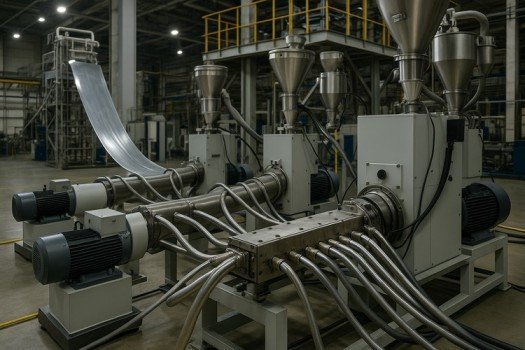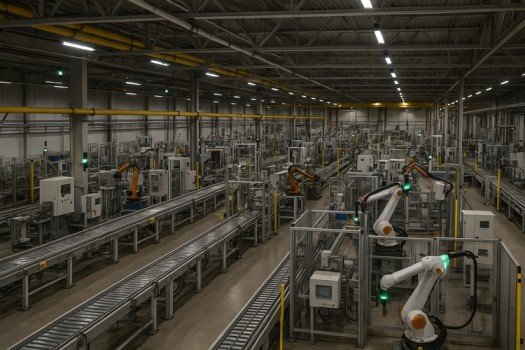Most people think reducing their carbon footprint means giving up everything they enjoy until they discover the four changes that actually matter: switching to renewable energy, eating less beef, skipping unnecessary flights, and ditching the daily car commute. These four moves alone can cut your emissions by 60% while often saving you money.
Here’s what caught my attention: while global CO2 emissions hit a record 37.8 billion tons in 2024, the average American still produces 16 tons annually – four times the global average of 4 tons. That gap represents opportunity, not judgment. The UNEP reports we need 42% emission cuts by 2030, which sounds impossible until you realize how much impact the right changes can make. The strategies below focus on what actually works, starting with the moves that deliver the biggest bang for your effort.
TL;DR: Quick Carbon Footprint Reduction Strategies
- Switch to renewable energy sources for 40-60% emission reduction
- Reduce meat consumption, especially beef, by 75% for major dietary impact
- Use public transportation, cycling, or electric vehicles instead of gas cars
- Avoid or minimize air travel, particularly international flights
- Improve home insulation and upgrade to energy-efficient appliances
- Implement waste reduction and circular economy practices in business operations
Understanding Your Carbon Footprint Impact
Your carbon footprint measures the total greenhouse gas emissions you produce directly and indirectly through daily activities, purchases, and lifestyle choices. This includes obvious sources like driving and heating your home, plus hidden emissions from manufacturing the products you buy, the food you eat, and the services you use.
Most people underestimate their actual impact. Research from the University of Michigan shows the average US household generates 48 tons of CO2 equivalent annually, with 16-20% of those emissions occurring in other countries through imported goods and services. A typical American’s per-person footprint of 16 tons is four times the global average and eight times what scientists say is sustainable long-term.
15+ Practical Ways to Reduce Your Carbon Footprint
The strategies below are organized by impact level and implementation difficulty, starting with transportation since it typically represents the largest portion of individual carbon footprints. Each method includes realistic reduction estimates based on current research, so you can prioritize changes that match your lifestyle and budget constraints.
Focus on the highest-impact changes first. While every action helps, some strategies deliver 10-20 times more carbon reduction than others. Rather than trying everything at once, master 2-3 major changes before moving to smaller optimizations. The goal is sustainable progress that becomes part of your routine, not temporary efforts that fade after a few weeks.
Transportation: The Largest Impact Zone
1. Choose Public Transportation Over Personal Vehicles One simple swap: take the bus instead of driving. You’ll cut your carbon footprint by 2,400 kilograms of CO2 annually. That’s like taking a gas car off the road for five months.
The math is stark – passenger cars emit 0.67 pounds of CO2 per mile, while trains emit just 14 grams per kilometer compared to cars at 104 grams.
2. Consider Electric or Hybrid Vehicles If you need a car, electric vehicles powered by renewable energy can cut transportation emissions by 50-80%. Even with the current US electricity grid, EVs produce significantly fewer lifetime emissions than gas cars.
3. Optimize Your Current Driving Before buying anything new, try these free changes:
- Use cruise control (7-14% better fuel efficiency)
- Keep tires properly inflated
- Carpool twice a week (saves 2,000 pounds of CO2 annually)
4. Avoid Unnecessary Flying Here’s the brutal truth: one round-trip flight to Europe generates 1.6 tons of CO2 – that’s 10% of your entire annual carbon budget gone in one trip.
Energy Consumption: Major Household Impact
5. Switch to Renewable Energy Sources Here’s the biggest single change you can make: transitioning your home to solar power or choosing a renewable energy plan can potentially reduce household emissions by 40-60%. Solar systems typically pay for themselves within 7-10 years while providing decades of clean energy afterward.
6. Improve Home Energy Efficiency Proper insulation, weather sealing, and upgrading windows can reduce heating and cooling energy use by 20-30%. LED lighting uses 75% less energy than traditional incandescent bulbs while lasting 25 times longer.
7. Upgrade to Energy-Efficient Appliances and Heating Systems ENERGY STAR certified appliances use 10-50% less energy than standard models. Heat pump systems can reduce water heating energy use by 60-70% compared to conventional electric water heaters, making them increasingly popular as alternatives to gas furnaces in the heat pump vs gas furnace comparison. These upgrades often qualify for federal tax credits up to 30% of installation costs through 2032.
Dietary Changes: Significant Long-term Impact
8. Reduce Meat Consumption, Especially Beef Livestock production generates 14.5% of global greenhouse gas emissions. Beef production creates 30.4 kg of CO2 equivalent per kilogram, compared to chicken at 4.2 kg per kilogram. Eliminating red meat from your diet one day per week saves the equivalent emissions of driving 1,160 miles annually.
9. Choose Locally Sourced and Seasonal Foods Food transportation accounts for a smaller portion of food-related emissions than many people assume, but choosing local, seasonal produce when possible supports regional sustainability efforts and often provides fresher, more nutritious options. A low-carbon diet focuses on reducing the highest-impact foods first rather than obsessing over transportation distances.
10. Reduce Food Waste and Start Composting at Home Approximately 30-40% of food produced globally is wasted. Planning meals, storing food properly, and composting at home can significantly reduce the carbon footprint associated with food production and disposal. Simple composting at home diverts organic waste from landfills where it would produce methane, instead creating useful soil amendments for gardens.
Home and Lifestyle Modifications
11. Implement Comprehensive Recycling and Waste Reduction While recycling has smaller climate impact than major changes like transportation or energy use, proper recycling and waste reduction can save 600-700 pounds of CO2 annually per household. Focus on reducing consumption first, then reusing materials before recycling.
12. Reduce Digital Carbon Footprint Streaming video, cloud storage, and cryptocurrency transactions all consume significant energy. Reducing unnecessary data usage, choosing energy-efficient devices, and being selective about cloud services can lower your digital emissions by 200-300 kg CO2 annually.
13. Choose Sustainable Products and Materials When making purchases, prioritize products made from sustainable materials, designed for durability, and manufactured using renewable energy. I’ve noticed more companies focusing on alternatives like stone paper vs traditional paper, which can reduce paper-related emissions significantly when you’re making purchasing decisions for your business or personal use.

Water Conservation Strategies
14. Reduce Hot Water Usage Water heating accounts for 18% of home energy use. Taking shorter showers, using cold water for laundry when possible, and fixing leaks promptly can reduce both energy consumption and water waste.
15. Install Water-Efficient Fixtures Low-flow showerheads, faucets, and toilets reduce both water consumption and the energy required to heat water, providing dual environmental benefits.
Advanced Strategies for Committed Individuals
16. Support Carbon Sequestration Projects While focusing on emission reduction should be the priority, supporting legitimate reforestation, soil carbon storage, or direct air capture projects can help offset remaining emissions that are difficult to eliminate.
| Strategy | Annual CO2 Reduction | Implementation Effort | Cost Impact |
| Switch to renewable energy | 4-8 tons | Medium | Long-term savings |
| Eliminate red meat | 0.8 tons | Low | Potential savings |
| Use public transportation | 2.4 tons | Medium | Significant savings |
| Avoid one transatlantic flight | 1.6 tons | Low | Major savings |
| Improve home insulation | 1-3 tons | High | Long-term savings |
| Upgrade to electric vehicle | 2-4 tons | High | Variable costs |
| Reduce food waste by 50% | 0.3-0.5 tons | Low | Direct savings |
| Install LED lighting | 0.2-0.4 tons | Low | Immediate savings |
What About Business and Manufacturing Carbon Reduction?
If you’re running a business or work in manufacturing, the individual strategies above still apply to your personal life, but your company decisions have much bigger impact potential. The industrial sector accounts for one-fifth of global greenhouse gas emissions, so business-level changes matter enormously.
Energy Efficiency in Production Manufacturing facilities can reduce emissions by 20-40% through energy audits, equipment upgrades, and process optimization. I’ve seen companies implementing IoT sensors and AI-driven analytics achieve even greater reductions through real-time energy monitoring and predictive maintenance, though the upfront investment can be substantial.
Material Choices That Actually Matter Here’s where things get interesting: switching to sustainable materials can dramatically reduce product lifecycle emissions. If you’re curious about alternatives, understanding how stone paper is made shows why some companies are eliminating tree harvesting and reducing water usage by up to 90% in their production processes.
Supply Chain Reality Check Small business decarbonization often starts with energy audits and equipment upgrades before expanding to supply chain improvements. When evaluating suppliers, asking “is stone paper environmentally friendly?” demonstrates how material choices throughout the supply chain can either multiply or reduce environmental benefits.
Production Strategy Integration The most effective approach I’ve observed is implementing a comprehensive production line strategy that incorporates carbon reduction metrics alongside traditional efficiency measures. This helps manufacturers achieve both economic and environmental goals without sacrificing one for the other.

Measuring and Tracking Your Progress
Which Carbon Footprint Calculators Actually Work? Several reliable tools can help measure your baseline emissions and track improvements over time. The EPA’s calculator, Nature Conservancy’s tool, and specialized business calculators provide different levels of detail depending on your needs.
Setting Realistic Reduction Goals Based on current emissions data, individuals should aim for 7-10% annual reductions to align with global climate goals, while businesses may need larger percentage cuts depending on their industry and current efficiency levels.
Regular Monitoring and Adjustment Quarterly reviews of energy bills, transportation logs, and purchasing decisions help identify areas where emission reduction efforts are succeeding or need adjustment. Tracking specific metrics makes carbon reduction feel less abstract and more manageable.
The Bottom Line
Reducing your carbon footprint requires focusing on the changes with the biggest impact first. For most people, this means addressing energy use, transportation choices, and dietary habits before moving to smaller-scale actions. The strategies above can collectively reduce individual emissions by 60-80% when implemented comprehensively.
For businesses, integrating carbon reduction into operational strategy rather than treating it as an add-on initiative produces better results both environmentally and economically. Companies that view sustainability as a competitive advantage, rather than a compliance requirement, often discover cost savings alongside emission reductions.
The key is starting with one or two high-impact changes and building momentum rather than attempting everything simultaneously. Whether you begin with renewable energy, transportation changes, or dietary modifications, consistent progress toward lower emissions benefits both the environment and often your finances as well.
Frequently Asked Questions
Transportation (29%), electricity and heating (28%), and food choices (10-15%) make up the majority of individual carbon emissions. Focusing reduction efforts on these areas produces the most significant impact.
Recycling saves approximately 600-700 pounds of CO2 annually per household, but this is significantly less impact than major changes like renewable energy (4-8 tons saved) or transportation switches (2-4 tons saved).
Direct emission reduction should always be the priority. High-quality carbon offsets can complement reduction efforts but shouldn’t replace them. Many offset programs have questionable long-term effectiveness compared to not producing emissions in the first place.
Energy and transportation changes show immediate results, while dietary and lifestyle modifications typically show measurable impact within 3-6 months. Home efficiency improvements may take 1-2 years to demonstrate full benefits.
Behavioral changes like reduced meat consumption, public transportation use, and energy conservation provide immediate savings while reducing emissions. These changes often pay for themselves immediately through lower utility and transportation costs.








